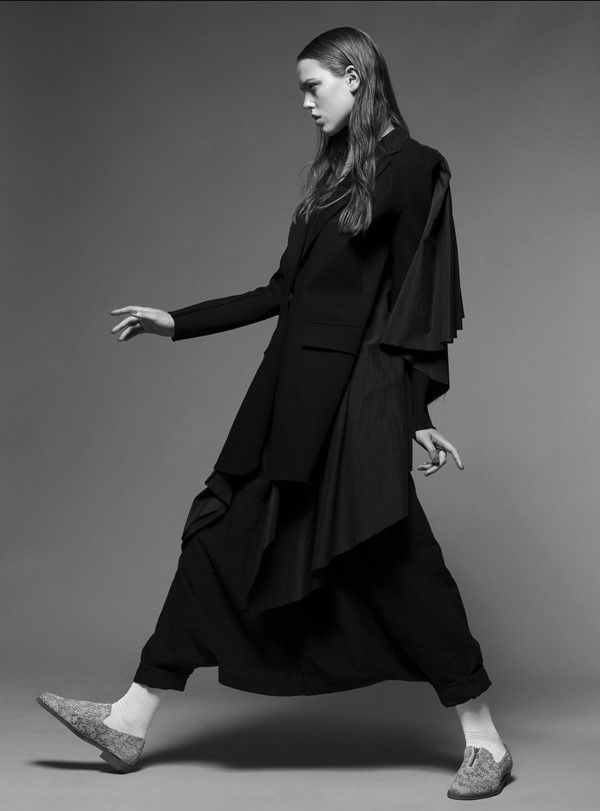To accompany the feature on Chinese designer Uma Wang in the new issue of AnOther Magazine, AnOther Website presents an overview of China's most aspiring fashion talent
To accompany the feature on Chinese designer Uma Wang in the new issue of AnOther Magazine, AnOther Website presents an overview of China's most aspiring fashion talent with exclusive imagery courtesy of photographer Joachim Mueller-Ruchholtz and stylist Nobuko Tannawa...
Everything is quick and intense in modern-day China – a brand new Louis Vuitton flagship store can blossom in the blink of an eye, and it doesn’t take long for the country to nurture her own class of supermodels. But when it comes to designers, it seems to be a different story. For almost two decades, countless homegrown designers have gone under the radar while the country invested all her enthusiasm into western logo-branded luxury. This, however, could now all change.
“Could this new wave of talents spark a 1980s Japanese-style fashion awakening for the world’s most populated country?”
Paving the way is Masha Ma who, after sending two collections down the runway in London, is debuting her A/W12 collection on schedule at Paris fashion week today. Known for the intricate architecture of her pattern cutting, Ma’s designs brush off any “Sino-stereotype” that is commonly associated with established Chinese labels such as Shiatzy Chen and Vivienne Tam. When envisioning her perfect female ideal, Ma describes, “a woman who is undeniably strong, but her strength is not that of the masculine femininity popularised over recent times but rather in a pure form that stands on its own, delicately, with sophistication.” Ma’s unstoppable rise is also picked up by Dolce & Gabanna’s Spiga 2, a store that aims to promote and support emerging new talents.
Having shown in Milan this season, is Uma Wang. As one of most avant-garde Chinese designers, Wang has a fondness for asymmetrical silhouettes, reminiscent of those of Yohji Yamamoto; and her innovative use of textiles is also evidence of her subtle intellect. In contrast to Masha Ma, Wang not only showcases her collections abroad, but also maintains a position in her native Chinese market, by both consistently taking part in Shanghai fashion week and by opening her own stores in mainland China.
As well as winning the revived Woolmark Prize for his 2008 Paris presentation, Qiu Hao was recently named by WGSN as Breakthrough Designer. Accolades aside, Qiu is known for entrenching in his work the contrasting ideas of crafted textiles and minimalism. Although Qiu’s works may seem experimental at times, he is most popular among Chinese celebrities and socialites. Having collaborated internationally with the likes of Stephane Sednaoui and Terence Koh, Qiu reflects on being a designer from China, “I often get asked about being Chinese and the subject of China. I am a Chinese designer, but it is only an external label. It doesn’t bother me at all.”
Coincidentally, all three designers were trained at Central Saint Martins. It is too early to say the fashion world is on the brink of a China moment, but it does look inevitable. Could this new wave of talents spark a 1980s Japanese-style fashion awakening for the world’s most populated country?
Text by Adam Chen
Photographer: Joachim Mueller-Ruchholtz
Stylist: Nobuko Tannawa
Hair: Mari Ohashi using Bumble & Bumble
Make-up: Jo Frost using Sisley cosmetics and skin-care
Model: Josefien Rodermans @ Union
Photographic Assistant: James Donovan, Jordan Grant
Stylist Assistant: Aiko Koike
Make-up Assistants: Hannah Mirsaeedy, Faye Quinton
Many thanks to:
Nic Burns @ Star & Co
Colin Hume @ The Shoemakers Elves
Shot @ The Russian Club



